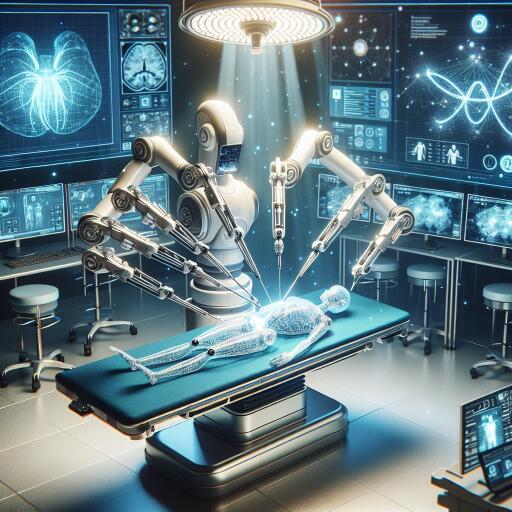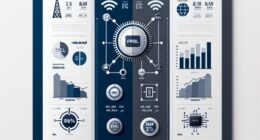NVIDIA and ORBIT-Surgical Forge the Future of Robotic Surgery with Groundbreaking Simulation Training
In an exciting leap forward for medical robotics, NVIDIA has teamed up with top academic institutions, including the University of Toronto, UC Berkeley, ETH Zurich, and Georgia Tech, to unveil ORBIT-Surgical, a state-of-the-art simulation framework designed to train surgical robots. This innovative project aims to enhance surgical teams’ capabilities while easing the cognitive load on surgeons, a development that carries significant implications for the future of minimally invasive surgery.
ORBIT-Surgical sets the stage for more than a dozen maneuvers directly derived from the traditional curriculum for laparoscopic procedures. This includes precision tasks like grasping tiny objects such as needles, seamlessly passing them between robotic arms, and placing them accurately within a surgical site.
The backbone of this pioneering framework is NVIDIA Isaac Sim, a sophisticated robotics simulation platform dedicated to the design, training, and evaluation of AI-powered robots. The collaborative team employed both reinforcement learning and imitation learning algorithms, utilizing NVIDIA GPUs for processing power. They further leveraged NVIDIA Omniverse for deploying advanced 3D applications, achieving photorealistic rendering thanks to pipelines based on Universal Scene Description (OpenUSD).
Complementing this advanced technological suite, the Intuitive Foundation, a nonprofit spearheaded by robotic surgery leader Intuitive Surgical, contributed the da Vinci Research Kit (dVRK). This collaboration showcased the potential of training digital twins in simulated environments to execute precise maneuvers in real-world lab settings.
The unveiling of ORBIT-Surgical took place at the prestigious IEEE International Conference on Robotics and Automation (ICRA) in Yokohama, Japan. In a move that promises to accelerate the development and adoption of surgical robotics, the research team has made the entire codebase openly available on GitHub.
Derived from Isaac Orbit, a comprehensive robot learning framework, ORBIT-Surgical facilitates the training of robots for both rigid and soft object manipulation. Through the use of NVIDIA RTX GPUs, it allows for the application of reinforcement and imitation learning techniques, laying the groundwork for a multitude of surgical training tasks. These range from one-handed operations, such as picking up gauze or inserting a shunt into a blood vessel, to more complex two-handed maneuvers, including the precise handling and threading of needles.
One of the most remarkable aspects of ORBIT-Surgical is its ability to significantly accelerate the learning process for surgical robots. By harnessing GPU acceleration and parallelization, the framework enables robots to master complex tasks like needle threading in a fraction of the time required by traditional training methods. This efficiency gain not only streamlines the development process but also elevates the potential for robots to assist in actual surgical procedures.
Moreover, the high-level visual fidelity achieved through rendering in Omniverse has paved the way for the generation of synthetic data of unparalleled quality. This data is instrumental in training AI models for perception tasks, such as accurately identifying surgical tools in operation room videos. A proof of concept demonstrated that integrating simulation-derived data with real-world inputs could drastically improve model accuracy in tool segmentation tasks, thereby minimizing the dependency on extensive, costly real-world datasets for AI training.
The implications of ORBIT-Surgical extend far beyond the immediate advancements in robot training and surgical assistance. By forging a path toward more intuitive, responsive, and precise surgical robots, the collaboration between NVIDIA and leading academic researchers signals a new era of surgical care—one where technology and human expertise converge to achieve the highest standards of patient care.
To delve deeper into the technological innovation behind ORBIT-Surgical and explore other NVIDIA-inspired papers presented at ICRA, readers are encouraged to review the full research paper and related documentation.
Written by a seasoned journalist with a rich background in deep learning, science, and healthcare technology, this piece shines a light on the remarkable strides being made at the intersection of robotics and surgical advancement. With a solid foundation in journalism from Stanford University, the author brings a critical eye to the latest in tech developments, illuminating the path forward in robotic-assisted surgeries.









